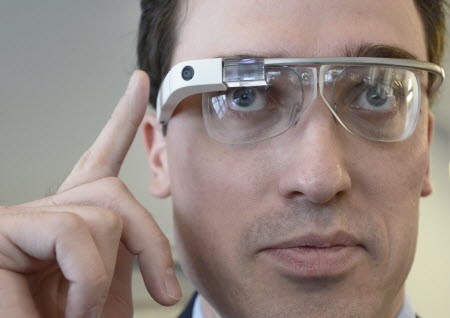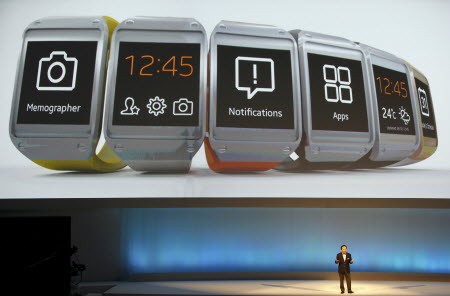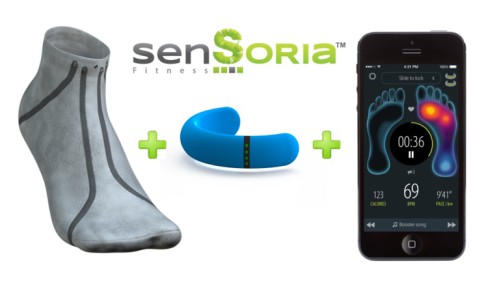
First our phones became smart, now everything else is smart too
SCMP.com's picks for five of the most interest "smart" devices in development

Twenty years ago, there was no such thing as a smart phone.
In fact, mobile phones themselves were still a fairly novel phenomenon, if the big Motorola clunkers of the early 90’s could even be considered “mobile”. It was another time and another place – a bygone era where phones were content to remain dumb.
Fast forward to 2014, and suddenly “smart” is the way to go. The average consumer’s iPhone or Samsung Galaxy is equipped with constantly improving computing power, high speed internet access, the potential to download millions of games and a variety of other bells and whistles that often overshadow one small fact – that hey, this thing can actually be used to call people.
But it’s not just phones that have gone sentient. Suddenly, everything from wristwatches to intimate wear has decided to hit the books and become intelligent, for better or for worse. To celebrate this bold new era of the machines, here are SCMP.com’s picks for the top five most intriguing smart devices – from the possibly useful to the amazingly odd.

5. Smart glasses
Google, the company that popularised internet search engines and the Android operating system, branched off in 2011 to announce Google Glass, a wearable computer with a head-mounted display that can record video, connect with the internet by voice commands, display information and relay it back to the wearer via a bone conduction transducer. Promoted as an innovative means of accessing the internet while on the go, Google Glass is currently in a beta testing stage and has garnered early praise for its potential applications in a variety of different fields, including health – a doctor performing surgery could stream his entire procedure across the internet for the benefit of medical school students simply by wearing Google Glass, for example. Despite positive early reactions, there is currently no official word on when Google Glass will become available for the masses.

4. Smart watches
Smart watches were in the news for much of 2013, with rumblings that American electronics giant Apple was going to revolutionize the watch game in the same way that they’re changed the music and phone industries with their iPod and iPhone devices. But while rumours of an iWatch have yet to materialise, there are several existing smart watches on the market that allow users to make voice calls, listen to music and take photographs. Chief among these is Samsung’s Galaxy Gear, a device that can be used in conjunction with Samsung’s Galaxy line of mobile phones and tablets. Designed as the real-life version of Dick Tracy’s famous radio wrist watch, in reality, the Galaxy Gear received largely negative reviews for its design, poor battery life and limited usability – although this has not stopped Samsung from teasing the release of a Galaxy Gear 2 sometime in 2014.

3. Smart socks
Sensoria is an American fitness company that has brought the concept of “smart” to workout socks. Filled with sensors that gather data on a person’s weight, heart rate and the amount of pressure they might be exerting on themselves during exercise, Sensoria’s smart socks pick up information that can be synched with the company’s mobile app, allowing runners instant access to a plethora of details usually only available on the dashboard of the treadmill in the gym. (And despite their tech-infused interior, the socks are fully washable too.) Sensoria’s smart socks have an expected release date of March 2014 and can be pre-ordered from the company’s website for US $149. Aside from socks, the company is also creating fitness shirts and sports bras with the same sensor technology.

2. Smart bras
Speaking of bras, yes – smart bras are a thing. Not only is Sensoria developing smart sports bras for release later this month, but a group of Microsoft researchers are currently developing a device that can be inserted into a woman’s bra to detect stress levels and heart activity. This information can then be sent via Bluetooth to a smart phone, alerting users to their condition and encouraging them to try breathing exercises when their heart rates start to spike. Designed as a means of curbing activities that result from stress such as emotional overeating, Microsoft’s smart bra is still in the early research phases and seems unlikely to come to stores anytime soon.

1. Smart wigs
And if smart glasses, watches, socks and bras weren’t enough for you, soon you might be able to get yourself an intelligent toupee as well. Dubbed a “wearable computing device” in a patent that was filed in May 2013, the smart wig is the brainchild of Japanese electronics company Sony. Filled with sensors that act as a GPS and provide tactile feedback, the smart wig has not only been touted as a potential bit of future headwear for the hairless, but also as a handy tool that might be worn by visually impaired people to help them navigate their environments. The smart wig is still far from a public release, but Sony is presumably developing the device as a direct competitor to Google Glass.
Whether or not any of these smart devices actually becomes the next big thing is anyone’s guess, but it is certainly possible. While it might seem farfetched to imagine wearing a smart bra today, just imagine how a consumer in 1994 may have reacted if you told them that just twenty years later, they’d carry around a little white box in their pocket that could be hooked up to a worldwide information network to provide directions on how to drive to the nearest burger restaurant at any odd hour of the day.
And at least they haven’t started making smart toothbrushes yet.